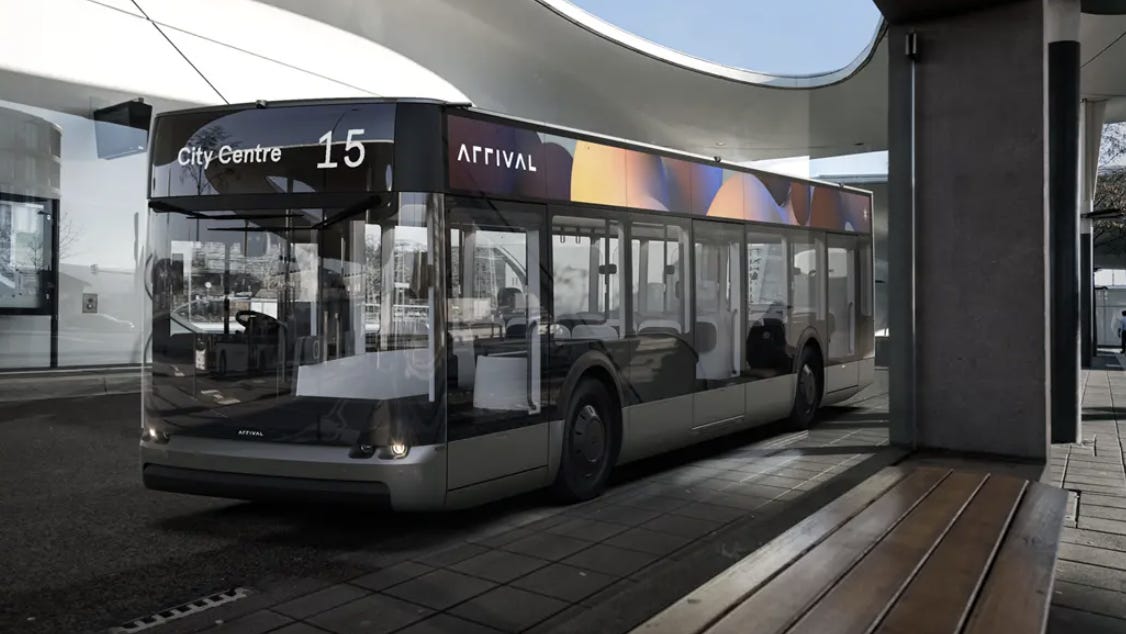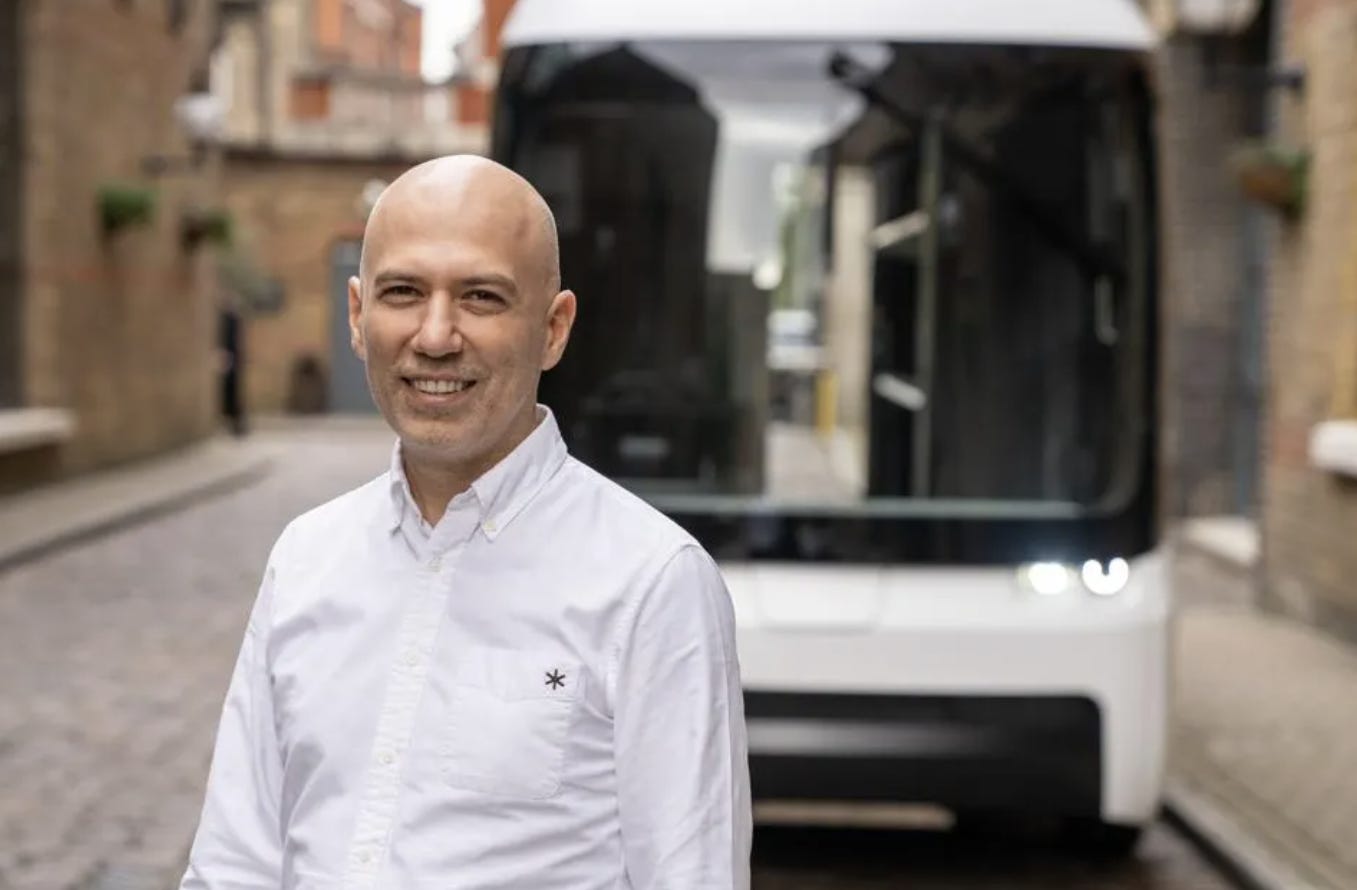The 6 strategic mistakes that sank the UK-based EV manufacturer Arrival
When ambition backfires - How Arrival burned $1.5 billion and what you can avoid
Hi…I’m Tomer Jakov👋
Welcome to TJ’s Innovation Zone 💡
During the last 15 years, I’ve been helping established companies, startups, and government to foster innovation in traditional industries. As an executive, and now as an advisor.
In this newsletter I share my professional insights, case studies breakdowns, and emerging technology trends to help and inspire you, as disruptor, to transform industries.
If you are a Startup Founder, Entrepreneur, Innovation leader, or simply an innovation enthusiast like me…
Innovation and business strategy go hand in hand, yet many organizations treat them as separate endeavors. Traditionally, innovation managers focus on technology while C-suite executives set business strategy…
That creates a disconnect that often dooms innovation in established companies.
During my career as an executive in a large operations group, I gained a unique perspective by simultaneously serving as VP of Business Development and Head of Innovation. This dual role allowed me to bridge the gap between identifying promising technologies and evaluating their business potential, seeing firsthand how innovations must align with market opportunities to create real value.
To demonstrate this point I’ll use the story of Arrival, a promision UK-based startup with a vision to disrupt electric vehicle manufacturing that ceased operations during 2024.
Their journey shows that innovative ideas need a strong strategic foundation and a market awareness to succeed.
In this week’s article, I will analyze 6 strategic mistakes Arrival made and what you, as a startup founder, can learn from their story.
Let's dive in...
From its inception in 2015, Arrival captured the world’s imagination with a disruptive approach to EV manufacturing. The company promised a future where electric vehicles could be produced more sustainably and cost-effectively through innovative microfactories (see more details below).
This ambitious vision attracted substantial investment, including
Early-Stage Funding - Dennis Sverdlov, the company's founder, personally invested approximately $500 million over five years.
Strategic Partnerships:
Hyundai/Kia (2020) - Invested €100 million, forming a strategic alliance to accelerate the global adoption of commercial EVs.
BlackRock (2020) - Invested $118 million.
Major Orders - UPS placed a landmark order for 10,000 electric vans, with an option for 10,000 more.
Public Offering (2021) - Arrival went public through a SPAC merger, raising $660 million.
Recent Financing (2023) - Secured a $300 million equity financing line, contingent on meeting specific conditions.
At its peak, Arrival boasted a valuation of $13.6 billion (!!!)
However, such a lofty valuation naturally brought immense pressure. Despite raising almost $1.5 billion in funding, the company faced significant challenges in meeting production targets and achieving profitability.
In Q1 2024, Arrival ceased to exist.
How does a company that raised more than a billion dollars shut down in just a couple of years? The answer lies in a series of strategic mistakes combined with the unforgiving nature of a traditional sector.
Mistake #1 - Overly Ambitious Goals and Unrealistic Timelines
Arrival's downfall was partly attributed to setting excessively ambitious production and expansion targets, which ultimately proved unsustainable. This aggressive pursuit of growth strained resources and created a cascade of challenges.
Overly Ambitious Production Targets: The company initially projected producing 1,200 vans by 2022, a target that significantly outpaced actual production, which reached only 600 units. This stark discrepancy between ambition and reality eroded investor confidence and highlighted a fundamental gap between planned and achievable outcomes.
Investor Pressure: The pressure to meet these lofty targets fueled a need to constantly demonstrate progress to investors. This pressure often led to rushed decisions and a focus on short-term gains over long-term sustainability.
Unrealistic Timelines: The pursuit of aggressive timelines often compromised quality and strategic planning. Rushing development and production processes increased the risk of unforeseen issues and delayed the overall timeline, further exacerbating the challenges.
These overly ambitious goals created a self-perpetuating cycle of pressure. The company was constantly chasing unrealistic targets, leading to hasty decisions that ultimately undermined its long-term stability and hindered its ability to achieve sustainable growth.
Mistake #2: Unproven Technology at Scale
Another crucial misstep was the reliance on the microfactory concept…a novel approach that was not yet mature for mass production.
The "microfactory" approach refers to a decentralized, small-scale manufacturing model designed to produce goods more flexibly and efficiently than traditional large-scale factories. In the context of electric vehicle (EV) manufacturing, a microfactory typically features the following characteristics:
Smaller Footprint
Modular Production
Flexibility and Speed
Cost Efficiency and Sustainability
While innovative, this technology introduced unforeseen complexities that Arrival was unprepared to handle at scale.
Scalability Issues: Early-stage technology struggles when moving from prototype to mass production.
Cost Overruns: Investment in unproven methods led to significant financial strain.
Delayed Production: Inability to meet expected manufacturing timelines disappointed stakeholders.
By betting heavily on an untested concept without sufficient contingency plans, Arrival risked its future on shaky ground, contributing to operational bottlenecks and strategic vulnerabilities.
Mistake #3: Lack of Focus and Spreading Resources Thin
Instead of solely focusing on electric vans, Arrival pursued a strategy of rapid product diversification in 2021.
While unveiling its first electric delivery van, the company simultaneously initiated proving ground trials for an electric bus and revealed an electric car designed for ride-hailing and the consumer market.
This approach reflected Arrival's ambition to leverage its innovative manufacturing techniques across various segments (buses, cars, and vans), aiming to capture a larger share of the electric mobility market.
But this strategy came with a price...
Resource Dilution: Diversifying across multiple vehicle segments significantly diluted the company's resources. This spread-thin approach hindered the company's ability to focus its efforts and achieve operational excellence in any given area.
Operational Complexity: Managing the development and production of multiple vehicle types significantly increased operational complexity. This complexity increased the risk of errors, delays, and potential production bottlenecks across all product lines.
Market Confusion: A broad product portfolio made it difficult for Arrival to establish a clear brand identity and market position.
The decision to diversify too early and without clear prioritization made it difficult for Arrival to develop robust solutions, ultimately weakening its competitive edge.
Mistake #4: Financial Mismanagement and High Operating Costs
Arrival's financial strategy, characterized by high spending and rapid expansion, was another key factor in its downfall. The company maintained a high burn rate without a clear path to sustainable revenue, leading to mounting financial pressures.
High Burn Rate: Significant investments in technology development, hiring, and expansion increased operating costs exponentially.
Inefficient Allocation: Funds were spread across too many initiatives without clear ROI.
Cost vs. Revenue Imbalance: Despite major orders from partners like UPS and investments from Hyundai and Kia, revenue failed to keep pace with expenses.
Funding Struggles: As confidence waned, securing further funding became challenging, evidenced by the reliance on a $50 million bridge loan in 2023.
The company’s timeline reveals that after achieving EU certification and announcing substantial financial backing from Westwood Capital, the company still fell short of financial stability. These strategic financial missteps emphasized a lack of prudent financial management and realistic budgeting, further contributing to its downward spiral.
Mistake # 5: Leadership Inexperience and Market Dynamics
Strong leadership is critical in navigating the complexities of an industry as challenging as electric vehicle manufacturing.
Arrival’s leadership, despite its vision, often lacked the necessary experience, leading to critical misjudgements.
Leadership Gaps: Founder Denis Sverdlov, though passionate, had limited automotive manufacturing experience, impacting strategic planning.
Inexperienced Guidance: Decisions made without deep industry insight led to operational missteps.
Market Underestimation: The leadership underestimated the rapid advancements and competitive pressures in the EV market, intensifying strategic vulnerabilities.
Crisis Response: When facing production delays and financial difficulties, the leadership struggled to adapt strategies effectively, culminating in Sverdlov stepping down in 2022.
These leadership challenges were compounded by external market dynamics, such as an influx of established automakers into the commercial EV space. Arrival’s strategic decisions did not adequately account for these competitive forces, leading to missteps that were hard to recover from.
Mistake #6: Underestimating the Traditional Sector's Weight
Arrival, while aiming for disruption, failed to fully appreciate the inherent challenges of operating within the established automotive industry.
Deep-Rooted Supply Chains: Established automakers possess deeply entrenched supply chains and established relationships with suppliers. These advantages are difficult for startups to replicate, leading to potential bottlenecks and cost inefficiencies.
Brand Loyalty: Established brands benefit from strong brand loyalty and customer trust built over decades. Building a strong brand in a competitive market like automotive is a battle, especially for newcomers.
Regulatory Hurdles: Navigating the complex regulatory landscape of the automotive industry, including safety standards, emissions regulations, and consumer protection laws, can be a significant obstacle for startups.
Long Development Cycles: Bringing a new vehicle to market requires significant time and investment, making it difficult for startups to quickly adapt to market shifts or respond to competitive threats.
Arrival, by underestimating these deeply ingrained aspects of the traditional automotive sector, likely underestimated the time, resources, and resilience required to compete effectively.
Learning from Arrival's Strategic Missteps
The downfall of Arrival offers invaluable insights for startups and established companies alike. It’s a story of ambition, innovation, and ultimately.... a missed opportunity.
It reminds us that even the most brilliant ideas need a strong foundation to flourish.
Here are five key takeaways, learned through Arrival’s struggles, to help you avoid similar pitfalls:
Realistic Planning: It's easy to get caught up in the excitement of a new idea but always balance vision with pragmatism. Set achievable milestones with realistic timelines grounded in thorough market research.
Validated Technology: Innovation is essential but prioritize proven technologies where possible. Thoroughly test and pilot new technologies in controlled environments before scaling up.
Strategic Focus: It's tempting to chase every opportunity but define a clear target market and product focus.
Prudent Finances: Manage your finances wisely. Secure funding strategically, aligning it with key milestones, and establish clear metrics and KPIs to track your progress.
Experienced Leadership & Market Awareness: Building a successful business is a team effort. Assemble a diverse and experienced team and seek mentorship from those who have walked the path before you.
What strategic lessons do you think are most critical from Arrival's story?
Leave a comment below, share this post with colleagues, or join the conversation on LinkedIn to discuss how these insights can shape smarter strategic decisions and guide future innovations.








